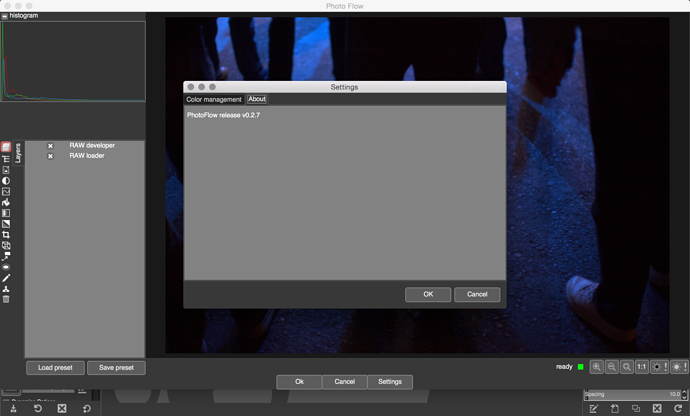
Instead the highlight information is still there, but some of the RGB channel values fall outside the RGB display channel value range of 0.0f to 1.0f. But the highlights aren't really blown (that is, clipped to 1.0 in one or more channels). The image in Figure 3 clearly has "blown" highlights in the sky. Then use "Colors/Exposure" to add one stop of positive exposure compensation - Figure 3 shows the result.
#Photoflow gimp download
Download tree.png, which is a 16-bit integer sRGB image.Steps 3, 4, and 5 describe the actual procedure: The worked example given below is broken down into five steps, starting with downloading the image. An inverse grayscale mask was used to keep the highlights from blowing out. Right: The same image after using high bit depth GIMP's "Colors/Exposure" at 32-bit floating point linear precision to add one stop of positive exposure compensation.

It might not appear to be the case, but this image is already very close to having out of gamut RGB channel values in the sky, and a simple Auto Stretch Contrast won't lighten the image at all.
#Photoflow gimp how to
A worked example showing how to recover shadow information using high bit depth GIMP's floating point "Colors/Exposure" Using high bit depth GIMP's "Colors/Exposure" to lighten the ground by one stop without blowing out portions of the sky. But unlike using Curves, using high bit depth GIMP's floating point "Colors/Exposure" doesn't clip RGB channel values and allows you to fine-tune the results by modifying and remodifying the layer mask until you are completely happy with the resulting tonality. This isn't exactly nondestructive editing because at some point you need to make a "New from Visible" layer. The same general procedure can be used to darken as well as lighten portions of an image, again controlling the effect using a layer mask.

High bit depth GIMP is my primary image editor, and I've used the procedure described below for several years as my "go to" way to modify image tonality.

The procedure is completely "hand-tunable" using masks and layers, and is as close as you can get to non-destructive image editing using high bit depth GIMP 2.9/2.10. This step-by-step tutorial shows you how to use GIMP's unbounded floating point "Colors/Exposure" operation to recover shadow information - that is, add one or more stops of positive exposure compensation to an image's shadows and midtones - without blowing out or unduly compressing the image highlights. But really these algorithms are special-purpose tone-mapping algorithms, which sometimes work pretty well, and sometimes not so well, depending on the algorithm, the image, and your artistic intentions for the image. Precanned algorithms for accomplishing this task are often referred to as "shadow recovery" algorithms. High bit depth GIMP's floating point "Colors/Exposure": much better than Curves for lightening the shadows and midtones of an image without blowing the highlightsĪ very common editing problem is how to lighten the shadows and midtones of an image without blowing out the highlights, which problem is very often encountered when dealing with photographs of scenes lit by direct sunlight.


 0 kommentar(er)
0 kommentar(er)
